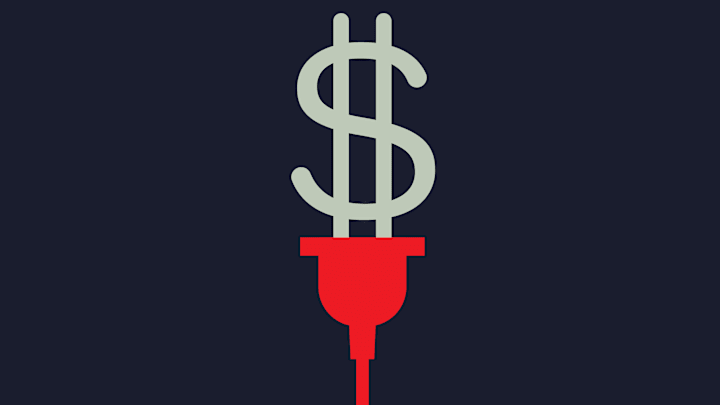Also known as “vampire power” or “standby power,” phantom energy refers to the electricity your devices consume even when they appear to be off—think TVs waiting for a remote signal, game consoles in sleep mode, set-top boxes maintaining settings and chargers that stay warm with nothing attached. While each draw is small, it adds up: It’s estimated that phantom energy accounts for up to 10 percent of household electricity use. Keep in mind that this figure can be even higher in homes with smart, networked devices that remain “awake” for updates and quick-start features.
Why it Matters
That hidden load doesn't just pad your electricity bill. It also carries a climate cost because the power still has to be generated. One striking example: Internet-connected TVs with “smart wake” features can draw up to 40 watts in standby mode—nearly 40 times more than a regular TV, according to the Associated Press. Multiply that by millions of households, and the waste becomes impossible to ignore.
Hiding in Plain Sight
Living rooms and home offices are the main culprits behind phantom energy due to standard household devices like set-top boxes, gaming consoles, sound systems, printers, and computers and their peripherals. Kitchens contribute via small appliances with clocks and displays. Chargers and power adapters are steady offenders; smart light bulbs and electric toothbrushes, by contrast, draw only a nominal amount when idle.
How big is your phantom load?
You don’t have to guess. Plug-in electricity monitoring devices allow you to measure the phantom load of each device in real-time. You can also sign in to your utility’s online dashboard to track hourly smart-meter data and spot overnight baselines or usage when no one’s home.
Tips for Reducing Your Phantom Load
Unplug what you don’t use daily.
While it’s unrealistic to unplug every single electronic device in your home before you go out, consider unplugging the items you only use occasionally, such as a coffee maker, printer, toaster oven, or backup chargers.
Use power strips.
Plug big-ticket items like cable boxes, gaming consoles, and sound systems into a single switched (or smart) power strip so you can cut power with the touch of a button. It’s also worth noting that cable boxes and game consoles typically draw far more phantom energy than smaller devices.
Tweak your settings.
If unplugging or switching outlets feels like too much, take a few minutes to update your settings. Start with the TV: Turn off voice assistants and instant-on, ditch ambient/art displays, and disable wake-on Wi-Fi or Bluetooth. For game consoles and set-top boxes, choose energy-saving sleep and curb background updates or remote-wake.
Printers, speakers, and other smart devices can also be quieted by switching off cloud pings, status lights, and “always ready” modes you don’t need. Seemingly minor tweaks like these cut phantom energy without changing your routine.
Upgrade your devices wisely.
When replacing or upgrading electronics, opt for models with low standby power—especially those with always-on features like routers, mesh nodes, and streaming boxes. Also, check the specs or manual for standby/idle draw; aim for about one watt or less where possible.
